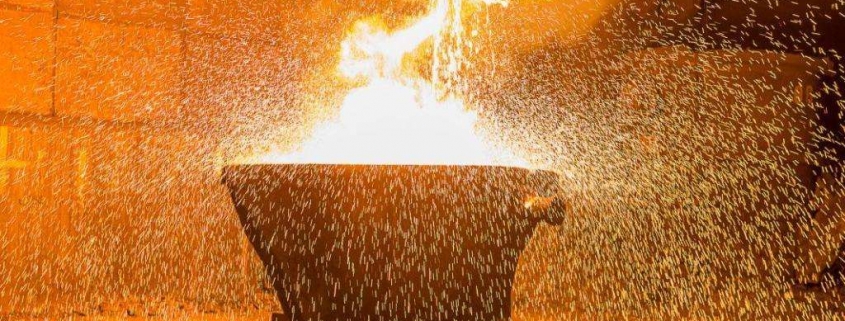Metallurgical dust
The main components of metallurgical dust are gas dust, gas mud, steel-making dust and so on.
Blast furnace dust
The blast furnace dust mainly refers to the metal vapor captured by the dust collector in the metallurgical operation, such as the raw material dust generated along with the blast furnace gas movement, the fuel dust in the blast furnace, etc. There are two ways for dust collector to collect blast furnace dust and mud, namely dry and wet. Dry dust collector is used to collect powdery solid. It is called blast furnace gas ash. Wet collection is to collect the dust and mud in slurry state by using wet dust collector, which is called blast furnace gas mud. Blast furnace dust is rich in zinc, iron and other elements. At present, most enterprises in our country use weak magnetic iron separation technology for classification and selection, to recover the iron concentrate contained in the dust, and to recover the carbon concentrate contained in the dust by flotation technology.
Steelmaking dust
The steelmaking dust refers to the phenomenon that some metal impurities with lower melting point will burst or even splash the boiling molten iron due to the change of high temperature environment when the molten iron is heated and smelted in the metallurgical converter. When the molten iron is discharged from the high temperature furnace, a large number of fine metal liquids will exchange with the cold air outside the furnace rapidly, and will form when the air continues to cool Metal dust. The main component of steelmaking dust is metal dust, which contains calcium, iron and other elements, usually in the form of oxide. At present, there are three ways to deal with steel-making dust and mud in China. The first is to mix and shake the steel-making dust and other dry powder according to a certain proportion, and then add some sintering raw materials for de coagulation and reuse. Second, because there are a lot of iron elements in the steel-making dust, the metal in the dust can be turned into pellets, which can be put into the converter again for roasting and utilization. Third, because the steel-making dust contains calcium element, the steel-making dust can play the role of replacing quicklime.
Fly ash
Fly ash refers to the fine ash collected in the smoke generated after coal combustion. Because of its strong adsorption activity and water absorption performance, most of the coal dust is used as admixture of concrete to realize resource reuse. In the process of making concrete, adding a proper amount of coal dust can save cement and fine aggregate, reduce water consumption and workability of concrete, and improve the impermeability of concrete. Nowadays, fly ash has been widely used in building materials, municipal construction and other industries in China.



